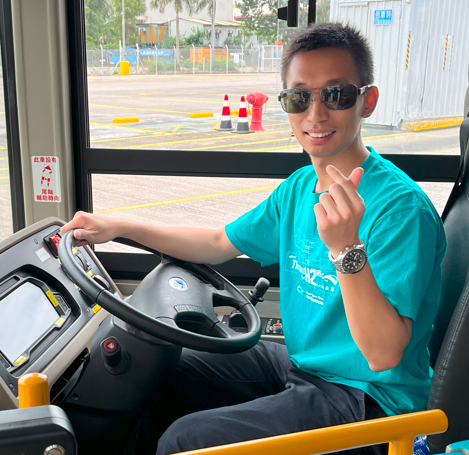Eddy Dissipation Rate (EDR) – 一個同turbulence intensity 有關既詞彙!
Reference: https://www.flyingmag.com/how-do-you-interpret-an-eddy-dissipation-rate/
EDR quantifies turbulence for a specific aircraft, and it’s not a measure of the likelihood of turbulence—just the intensity.
ERR – Eddy Dissipation Rate 的三件事
- refer to specific aircraft (type specific)
- describe the intensity of turbulence
- 同turbulence 發生機率無關
EDR 愈高代表Turbulence 對果類機既影響愈大
EDR is an observed or forecast value that is between 0 and 1 with 0 representing perfectly smooth air and 1 implying supercell thunderstorm level of mixing.
Note:
EDR is an aircraft-independent meteorological field expressed in m²/s³ (meters squared per seconds cubed). Simply put, an atmosphere that causes eddies to dissipate rapidly is one that is likely turbulent. Most importantly, EDR is not a measure of the likelihood of turbulence, just the intensity.
EDR 係 aircraft type specific information
EDR is not a “one size fits all”. This means an EDR value of 18 may produce moderate turbulence for a Cirrus SR20, but will be considered light turbulence for a Boeing 737.
溫故知新 – Other background knowledge :
What we should do when come across turbulence in flight?
When confronted with moderate or greater turbulence while in flight, the first response is to slow down below the aircraft’s maneuvering speed (a.k.a turbulence penetration speed)
Who define this “turbulence penetration speed” / What factor affect the “turbulence penetration speed”?
Maneuvering speed is directly dependent on the aircraft’s weight. In other words, the heavier the aircraft, the higher the maneuvering speed.
Why we need to reduce to (fly at) the so called “aircraft’s maneuvering speed”?
By reducing airspeed, the goal is to reduce the forces (or load) on the aircraft parts that could fail as the aircraft accelerates and decelerates in moderate or greater turbulence. (吾會整爛隻機, 但又夠speed 去generate sufficient lift for the acft to fly through the turbulence area)
Calendar
| S | M | T | W | T | F | S |
|---|---|---|---|---|---|---|
| 1 | 2 | 3 | 4 | 5 | 6 | |
| 7 | 8 | 9 | 10 | 11 | 12 | 13 |
| 14 | 15 | 16 | 17 | 18 | 19 | 20 |
| 21 | 22 | 23 | 24 | 25 | 26 | 27 |
| 28 | 29 | 30 | 31 | |||
Archives
- December 2025
- November 2025
- October 2025
- September 2025
- August 2025
- July 2025
- June 2025
- May 2025
- April 2025
- March 2025
- January 2025
- December 2024
- November 2024
- October 2024
- September 2024
- August 2024
- July 2024
- June 2024
- May 2024
- April 2024
- March 2024
- February 2024
- January 2024
- December 2023
- November 2023
- October 2023
- September 2023
- June 2023
- May 2023
- April 2023
- March 2023
- July 2022
- May 2022
- April 2022
- August 2021
- April 2021
- March 2021
- February 2021
- December 2020
- November 2020
- October 2020
- September 2020
- August 2020
- July 2020
- June 2020
- May 2020
- April 2020
- March 2020
- February 2020
- January 2020
- December 2019
- September 2019
- June 2019
- May 2019
- April 2019
- March 2019
- February 2019
- January 2019
- December 2018
- November 2018
- October 2018
- July 2018
- June 2018
- May 2018
- April 2018
- March 2018
- February 2018
- January 2018
- December 2017
- November 2017
- October 2017
- September 2017
- June 2017
- March 2017
- January 2017
- December 2016
- August 2016
- July 2016
- June 2016
- May 2016
- April 2016
- March 2016
- January 2016
- December 2015
- November 2015
- October 2015
- September 2015
- March 2014
- September 2013
- August 2013
- March 2013
- September 2012
- August 2012
Categories
- AFTC training
- AGK – Airframe, Engine, System
- AGK – Instruments
- ATPL Knowledge
- Aviation
- Aviation English
- BAK
- BC Life in CTB
- Book Sharing
- Books of OSH
- Cathay Pacific
- CNY Trip 2019
- CNY trip 2020 (Malaysia)
- Coffee
- Communication
- Corporate Governance
- English Learning
- Environmental Management
- ERM (enterprise risk management)
- Excel
- First Step Summit
- Flight International (Magazine)
- Flight planning and Monitoring
- HKMA ADMS
- Human Performance and Limitations
- Introduction to OHS
- IT
- Korea Trip 2019
- Learn from aviation accident
- Legislative Context in OHS
- London + Paris 2013
- Macau @ Trip 2017
- Meteorology
- Microsoft Windows
- MOLDOVA CHALLENGE
- My Diaries
- My Travels
- Navigation
- Occupational Health and Safety (OSH)
- Operational Procedures
- Operations Management
- Organizational Behavior
- OSH English
- Power BI
- Preparation
- Principal of Flying
- Python
- Quality Management System (QMS)
- Radio Navigation
- Regulations, Rules and Practices
- Risk Assessment
- Road to be an airline cockpit crew
- Route Training
- Summer Trip 2018
- Taiwan trip 2016
- The life in VHHH
- The road to be a pilot
- The road to be a RSO
- Uncategorized
- Weight & Balance
- Wine
- 學車 in CTB
- 私牌系列
- 馬來西亞 (怡保+檳城) 2024
